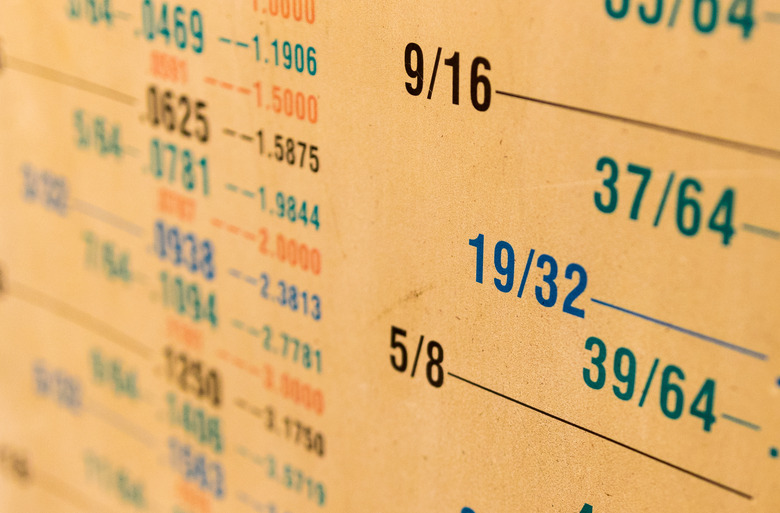How To Turn A Whole Number Into A Decimal
Whole numbers are the numbers you learned to count with, starting with zero and going up: 0, 1, 2, 3, 4 and so on. As the name suggests, no fractions or decimals are involved in whole numbers, but you may need to provide a whole number in decimal form anyway. You'll also encounter whole numbers as part of mixed numbers – that is, a whole number plus a fraction – in which case, you can convert the mixed number to decimal form.
Converting Mixed Numbers to Decimal Form
Converting Mixed Numbers to Decimal Form
Mixed numbers consist of a whole number and a fraction. Although it's not usually written out, there's understood to be a plus sign between the whole number and the fraction. So for example
\(6 \frac{1}{2} \text{ could also be written as } 6 + \frac{1}{2}\)
To convert a fraction to a decimal, you remember that 1/2 is the same as 1 ÷ 2 and work out the division. Those two principles come in handy when you convert mixed numbers to decimals because you can keep the whole number, work the division to change the fraction to a decimal, and then add the two together.
Changing a Simple Mixed Number Into Decimal Form
Changing a Simple Mixed Number Into Decimal Form
For example, when you want to convert 6 1/2 into a decimal form, you keep the 6, work the division to convert 1/2 into a decimal – the result is 0.5 – and then add the two together for a result of 6.5.
Converting a Harder Mixed Number
Converting a Harder Mixed Number
What if you're asked to convert a harder mixed number into decimal form, such as:
\(4 \frac{11}{16}\)
You use the same process. Keep the 4, and work the division to convert 11/16 into a decimal:
\(11 ÷ 16 = 0.6875\)
Then you add your whole number 4 with the fraction-turned-decimal 0.6875 and get the result, 4.6875.
Writing Whole Numbers as Decimals
Writing Whole Numbers as Decimals
If you're working problems or doing experiments where quantities or results must be specified to a certain number of places after the decimal point, you might need to write whole numbers as decimal numbers. In that case, you add the decimal point that's understood to be just to the right of the whole number, and then add as many zeros as needed after the decimal point.
An Example
An Example
If your whole number is 5 and you've been asked to write it as a decimal to the hundredth place, which is the second place to the right of the decimal point, you write it as 5.00. If you needed to log the same number to the thousandth place, which is the third place to the right of the decimal point, you write 5.000 and so on. This works the same with any whole number, going to any number of places after the decimal point because there are understood to be an infinite number of spaces after the decimal, and in the case of a whole number, each space is filled by a zero. You just have to decide how many of them you need.
Cite This Article
MLA
Maloney, Lisa. "How To Turn A Whole Number Into A Decimal" sciencing.com, https://www.sciencing.com/turn-whole-number-decimal-8218779/. 2 November 2020.
APA
Maloney, Lisa. (2020, November 2). How To Turn A Whole Number Into A Decimal. sciencing.com. Retrieved from https://www.sciencing.com/turn-whole-number-decimal-8218779/
Chicago
Maloney, Lisa. How To Turn A Whole Number Into A Decimal last modified March 24, 2022. https://www.sciencing.com/turn-whole-number-decimal-8218779/
